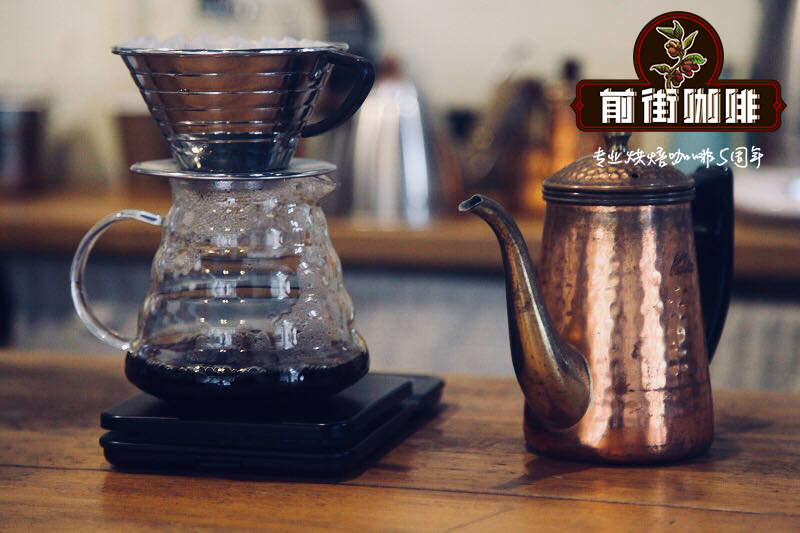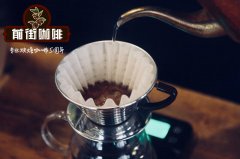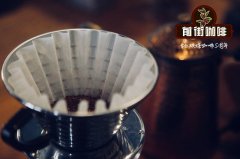What you should know about single coffee the meaning and relationship between single coffee and hand brewed coffee

Professional coffee knowledge exchange More coffee bean information Please pay attention to coffee workshop (Weixin Official Accounts cafe_style)
popular science| Coffee varieties knowledge, single coffee varieties and taste introduction, single bean prices
Have you ever walked into a coffee shop and seen someone else make coffee and wondered why everyone was ramming single-serve coffee? What does this mean? Does it mean anything?
You are not a few people who think this way. The original taste of a single item is of great significance. Perfect Daily Grind introduces many coffee and coffee shops around the world. In this article, we will quickly discuss the importance of a single item and give you knowledge that can be applied.
What does a single origin, a single region, a single estate represent?
"Single origin" is a broad term that is often interpreted simply as originating from a single producer, crop, or region of the same country of origin. "Single estate" and "single region" mean coffee comes from the same estate, processing plant or cooperative, and buyers can then see labels indicating the name of the region, specific region or estate where the coffee is grown, or even micro-regions (specific varieties within a specific estate).
However, this does not fully represent the meaning of the single item, as SCAE's Andra Vlaicu said: "The most important thing about single item coffee is that it can be traced back to the source, you can know exactly where the coffee came from, it is a single item rather than a mixed formula." Usually higher quality, you can see the history of the specific farm production, and the flavor of these coffees is the same as it should be, with the characteristics of specific coffees grown in specific areas.
That's why the third wave of coffee craze loves single-source coffees-people know more about the coffee you drink, and how the growing stage affects the flavor of the coffee.
A single-product coffee drying plant, pictured in El Salvador Apaneca-Ilamatepec, provided by Jasal Coffee.
Growing popularity of single-serve coffee
So how does single-serve coffee get into the mainstream? According to Jeremy Torz, founder and general manager of Union Hand-Roasted Coffee, the popularity of coffee is due to the increase in the number of boutique coffee shops offering different brewing methods such as hand-brewed or aromatherapy. "Other coffees can be offered without sacrificing coffee's core value, and these coffees are transferred to the coffee world." Given the ever-changing nature of the industry and baristas 'desire to experiment and innovate, it's no surprise that many in the industry are ready to jump out of tradition and look forward to the experience of coffee reshaped for the 21st century."
Single-serve coffee seems to be popular because of its traceability, says Andrew Hetzel of Café Makers Coffee Consultants: "The educated consumers I meet are looking for new flavours to help them explore these multi-flavoured experiences and feelings from the experience of good coffee. Most consumers are neither educated nor interested in being educated, but they can be subtly guided to try good coffee. This information, provided by the roaster or retailer, is helpful in explaining the origin of the beans (estate, land, farmer, climate, variety, treatment, etc.), the more detailed the better.
In the coffee craze, transparency and innovative approaches are attractive, and it's no surprise that single-serve coffee will be popular.
Well-grown Pacamara coffee fruit awaiting maturity, courtesy of Lechuza Café.
Demand for single-origin coffee drives change in origin
So what influences the growing popularity of single-serve coffee in coffee production?
It turns out that the market is large enough to influence the way it is grown, and some farmers (who specialize in fine coffee) are developing and improving high-quality crops for market demand. Find some of the varieties or cultivars that they have chosen to experiment with. Their technology has been able to control the growth stage, harvest period and harvest technology, processing plants and coffee processing methods.
Salvadoran red bourbon coffee, courtesy of Jasal Café.
Direct trade boosts coffee quality
These experiments would not have taken place without direct trade, and we have seen roasters and coffee farmers communicate more deeply in pursuit of higher quality coffee. Producers expect roasters to share market trends with them, but these boutique roasters, who have been looking for new single-origin coffees, now have easier access to farmers and can learn about coffee from them.
The growing popularity of bean hunting provides more knowledge for bean bakers and green bean sellers. In fact, there are very few quality bean roasters who don't know the details of their beans, to understand the effects of planting surface and processing on coffee beans. Growers, buyers and roasters will test coffee directly at the origin, in order to compare the scores of treatment and bean cup test, sometimes up to 100 cups of coffee a day, as the coffee information for both parties to trade, for consumers, the coffee information currently seen is more and more detailed.
But it's not just farmers and bean bakers. End consumers also play a role. Why not? Because the consumers are the last to receive high-quality coffee. According to J. Jorge Raul Rivera, Vice President of Raul Rivera S.A de C.V and representative of El Finca Santa Rosa Estate, said:
"Consumers will enjoy the harvest of farmers 'hard work throughout the year, which also encourages coffee farmers to work hard and show the results of their hard work to provide consumers with a great coffee experience."
As end-consumers demand higher quality, coffee farmers will try their best to grow better beans, so roasters will have to pay more reasonable prices to hard-working coffee farmers.
So the next time you order a cup of specialty coffee, remember that you're upping the ante and pursuing business ethics. Feels good, doesn't it?
Ananias Perez, a coffee farmer in Hulia, Colombia, grows coffee in Caturra on her estate.
The clearly visible firm endocarp represents the good quality of the coffee beans, provided by Caravan Coffee Roasters.
How does the coffee industry measure coffee quality?
So we think that usually a single origin represents good coffee, and this coffee must be combined with direct trade, leading to improved quality and stable supply conditions, but how do we know that coffee is good quality? After all, a single item does not mean good.
So the coffee industry has developed evaluation systems, and these globally authoritative systems (such as the Excellence Cup CoE or the Coffee Quality Certification Organization Q) are all evaluating coffee quality, covering single origin, single origin and trace batches of good quality coffee. These systems not only lead consumers to buy coffee, they also lead to continued purchases of higher-quality coffee beans, and when farmers and roasters use these systems to market their coffee, the good coffee produced is well rewarded.
The three major systems used are Excellence Cup CoE, Coffee Quality Appraisal Q, and Coffee Review. The Cup of Excellence competition evaluates these specially-produced and high-quality rare batches of coffee, the most recognizable evaluation in the world of fine coffee. Q's system follows SCAA (Specialty Coffee Association of America) standards, ranging from producer to growing stage evaluations to fine Arabica, fine Robusta and formula beans. Coffee Review, on the other hand, is arguably the most widely known and influential coffee buying guide in the world, invaluable to roasters and retailers, and presents a complete history of roasting beans.
How do these people judge the quality of coffee? Isn't coffee drinking subjective and personal? Yes, but these rating systems try to quantify coffee quality and remove subconscious bias, usually using blind tests and 100-point ratings, although the criteria for each system vary slightly, and you will usually find that they use professional sensory taste scales when describing coffee flavor categories.
Yellow cadura variety of El Salvador, courtesy of Jasal Café.
What do coffee farmers think of single-item coffee?
We hear a lot of theories about single-origin coffee, but what do coffee farmers think of it?
Today's coffee farmers, especially those who focus on specialty and single-origin coffee, take great pride in the quality of their coffee. They care about the flavor that ends up in the cup and reflects that quality to consumers. Andres Salaverria, of Jasal Café, El Salvador, said: "It's incumbent on the individual coffee farmers to let consumers know what fine coffee looks like or looks like…and to show them how much effort they put into their coffee."
Cesar Magana runs Lechuza Café in El Salvador and is a coffee farmer, barista and roaster who runs three small estates for Pacamara coffee (a Salvadoran hybrid known for its floral flavor, sweetness and smooth body). Magana believes that consumers want the best coffee, which means they have to rely on direct trade linking coffee farmers to the resources they grow. "If they knew the value of coffee, everyone would be guaranteed to continue to invest more in the coffee supply chain," he said. The barista or roaster should provide first-hand information about the farmer and the estate, which to me is a beautiful picture and the true meaning of single-serve coffee.
Therefore, the coffee farmers association supports the promotion of single-serve coffee as a way to improve the transparency of coffee information.
Roasted fine beans, courtesy of Caravan Coffee Roasters.
What does the roaster think of single-serve coffee?
Coffee farmers support single-ingredient coffee, but what about roasters?
Caravan Coffee Roasters 'green bean purchasing officer and quality control director Steve Hall said that the original single-serve coffee was not about high quality, it was just to distinguish it from the roaster's exclusive recipe beans in the cafe. Now, it feels that most of the fine bean roasters have not given fair treatment to coffee farmers and coffee. Now we have been talking about a single variety, a single manor, and we can't finish talking about it, and the more we talk about it, the more fascinating it is.
So is that a bad word for single origin? For Steve, perhaps it would be more appropriate to describe a single origin as inadequate. "Think of a country like Tanzania, which has a tropical marine climate, to the snow-capped mountains of Gilimanjaro, to the Neri Desert, to Lake Victoria, to the Selengeti National Park and other complex and diverse climatic features. Right on the edge of Rwanda, Burundi, Kenya, Uganda, Mozambique and the Republic of Congo, it has excellent coffee flavor variations. You can't describe the wonderful diversity of flavors of coffee with a single origin, but for lack of a better word, we can only call it a single origin. Over time, single origin has become synonymous with quality, and basically the roaster says,"I think this coffee is great. I want you to know more about it!"
What does single-item coffee mean to consumers?
We all assume that a single origin is good coffee, especially one that wins the Cup of Excellence competition, but is that what we want?
No.
Jeremy Torz advises: "Single estates are now more likely to be mainstream than single origins. When coffee shops want to offer unique beverages, and many agents and importers want to find a variety of small batches of coffee rather than 300 bags of the same type, roasters will seek coffee with clear origins, such as identifying wineries or brewers, and providing information on the origin of food and beverages seems to increase public interest in the product." He advises consumers that in addition to country of origin and roasting, pre-harvest procedures must also be known, because these will help you understand more about the factors that affect coffee flavor, not just know the origin information.
So a single origin lets you know why these coffees are so good.
Holly Bastin, co-founder of Roast Ratings, has some tips to help consumers interpret coffee shop menus:
filter coffee
In my experience, using filters,"single vs formula beans" are often compared to "explorers vs conservatives." If you want your coffee to be your signature, reliable, irreplaceable and not out of stock item, then formula beans are for you. For those who want to explore coffee flavor continuously, single-serve coffee can offer a variety of flavor options, from bold flavors to bland flavors.
espresso
The choice is similar to filter coffee, and brewing concentrate with single beans or formula beans is also "exploration pie vs. adventure pie". To some extent, the advice given by the author may still be different from the beverage you order. Espresso brewed with formula beans is often primarily aimed at flavor balance, and when it comes to milk-based drinks, formula beans are recommended for blending rather than single beans because they provide extended flavor firmness and milk to set off the coffee. Some single beans are good for espresso and the ratio of milk to coffee is right, but the best way is to ask your barista for advice. If you regularly drink black espresso, you should try to see the difference.
Now that you have a preliminary understanding of single-ingredient coffee, what's next? If you know that different geographical conditions and micro-climate will have such a great impact, it is normal to be a little scared. The way of the world is waiting for you to discover, and there is no need to say it here. Don't hesitate and let go of exploration, start experimenting with single-serve coffee. Roasters and coffee farmers want to bring you in and help you understand the industry, so don't be afraid to ask questions and give feedback as you enjoy your coffee, sharing one single coffee at a time.
Written by A. Pipunic and edited by T. Schrock.
Perfect Daily Grind.
What is soe coffee? The concept of single Coffee Single Origin and the recommendation of Coffee baking degree
Important Notice :
前街咖啡 FrontStreet Coffee has moved to new addredd:
FrontStreet Coffee Address: 315,Donghua East Road,GuangZhou
Tel:020 38364473
- Prev

What do you mean, single coffee? The meaning of individual coffee is different from that of mixed coffee.
Professional coffee knowledge exchange more coffee bean information please follow the coffee workshop (Wechat official account cafe_style) popular science | Coffee variety knowledge, individual coffee type and taste introduction, single bean price guests often ask in our Italian coffee takeout shop, do you have any single coffee? Even if we tell you
- Next

The difference between single Coffee and Italian Coffee is there any difference between Italian coffee and single coffee?
Professional coffee knowledge exchange more coffee bean information please follow the coffee workshop (Wechat official account cafe_style) popular science | Coffee variety knowledge, individual coffee type and taste introduction, single bean price if you go to the coffee bean roaster to find coffee, you won't find a mocha or latte because it's seasoned and processed coffee can be found in the coffee roaster.
Related
- Detailed explanation of Jadeite planting Land in Panamanian Jadeite Manor introduction to the grading system of Jadeite competitive bidding, Red bid, Green bid and Rose Summer
- Story of Coffee planting in Brenka region of Costa Rica Stonehenge Manor anaerobic heavy honey treatment of flavor mouth
- What's on the barrel of Blue Mountain Coffee beans?
- Can American coffee also pull flowers? How to use hot American style to pull out a good-looking pattern?
- Can you make a cold extract with coffee beans? What is the right proportion for cold-extracted coffee formula?
- Indonesian PWN Gold Mandrine Coffee Origin Features Flavor How to Chong? Mandolin coffee is American.
- A brief introduction to the flavor characteristics of Brazilian yellow bourbon coffee beans
- What is the effect of different water quality on the flavor of cold-extracted coffee? What kind of water is best for brewing coffee?
- Why do you think of Rose Summer whenever you mention Panamanian coffee?
- Introduction to the characteristics of authentic blue mountain coffee bean producing areas? What is the CIB Coffee Authority in Jamaica?

